Scanning headlines of technology news every day I was somewhat familiar with the phrase “Generative Design” and even browsed the Wikipedia page to find this informative flow-chart that shows the practice of generative design.
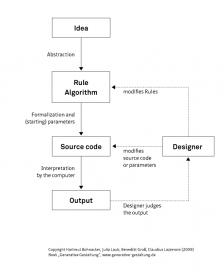
Generative design is an iterative design process that involves a program that will generate a certain number of outputs that meet certain constraints, and a designer that will fine tune the feasible region by changing minimal and maximal values of an interval in which a variable of the program meets the set of constraints, in order to reduce or augment the number of outputs to choose from.
Right away I could see the benefits of using an automated approach to generative design, because the designer can quickly see which design meets all of the requirements in an optimal way. Looking at the challenges of automotive design and the specific quest to develop autonomous vehicles it becomes clear that there is a lot of complexity in such a system:
- Dozens of sensors: Cameras, radar, LIDAR
- Decentralized Electronic Control Units (ECUs)
- Multiple data networks
- Wiring between sensors, ECUs and battery
There’s a torrent of data being generated by an Autonomous Vehicle (AV), gigabits per second which feed into decision and control systems, keeping us moving along the road safely. Experts calculate that it will take billions of miles of testing to verify that an AV is safe enough.
Fortunately there are intermediate steps towards reaching full level 5 autonomy, and the automotive systems have integrated sensors, computers and networks working together to meet the requirements of safe driving.
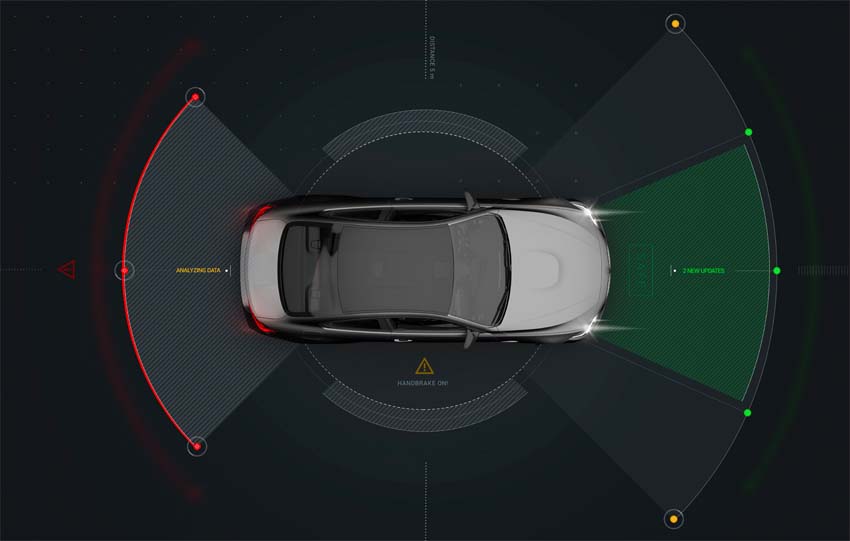
Features for level two autonomy could include:
- Active cruise control
- Lane departure warning
- Lane keep assist
- Parking assist
Meeting level two autonomy still requires that your car have 17 sensors or so: ultrasonic, long-range radar, short-range radar, surround cameras. The driver still has to manually respond to a notification about drifting outside of a lane and use steering to control a safe path.
The demands of level five AV are much higher than level two, so such an AV would have 40+ sensors:
- Ultrasonic
- Surround cameras
- Long-range radar
- Short-range radar
- LiDAR
- Long range cameras
- Stereo cameras
- Dead-reckoning sensors
With each added sensor there is an accompanying increase of wiring in the harness, and the need for increased computation of the massive data stream being generated by all of those sensors.
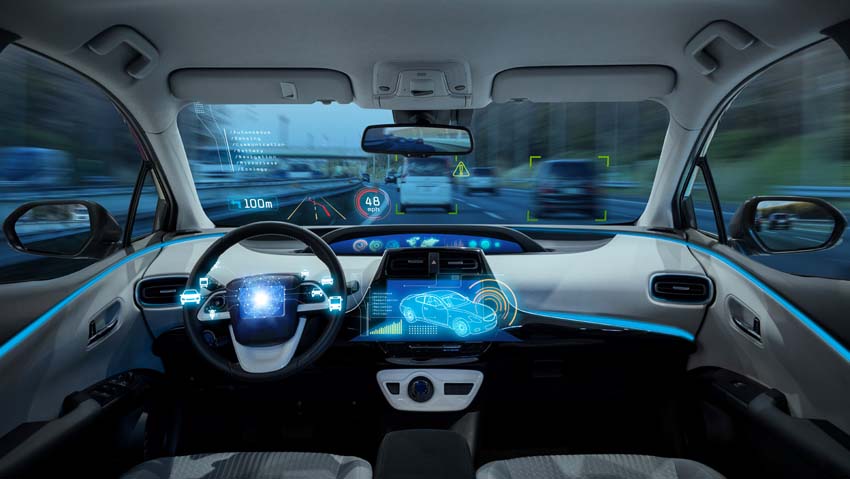
In America we have the Big 3 in automotive, but for AV there are some 144 companies developing products and services. Semiconductor spending on Advanced Driver Assistance Systems (ADAS) projects are in high-growth mode according to Strategy Analytics, reaching $13B by 2025:
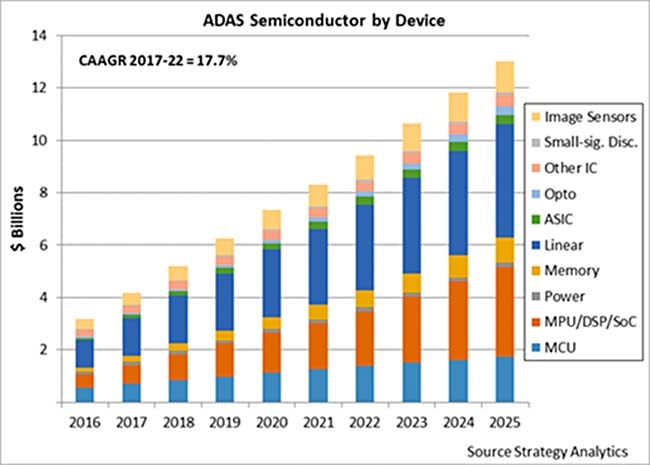
So how do the major automotive OEMs and startup semiconductor companies designing for ADAS make their systems safe and get to market quickly? Generative Design certainly has the promise to leverage the best practices of experienced engineers in a process that can optimize a system while meeting safety requirements.
Let’s take another look at the Generative Design process, and apply it to automotive design where rules-based automation can generate a wide range of ideas for hardware, software, networks and logic combinations:
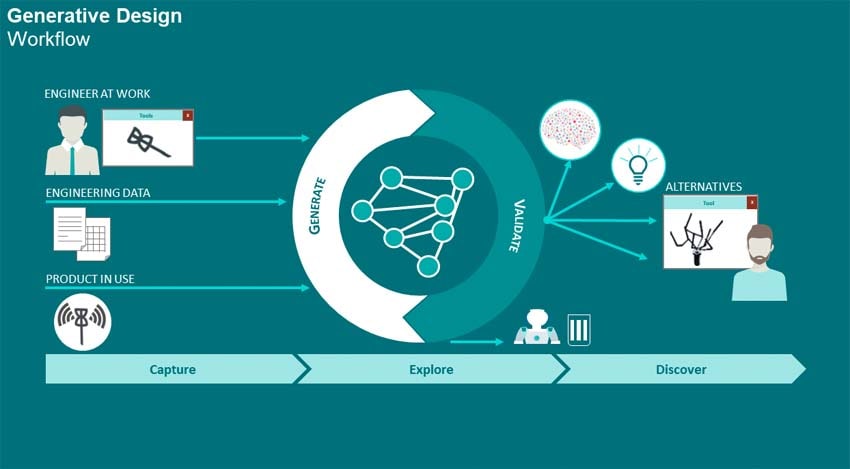
Your most-experienced engineers would be creating the rules to start with, then less-experienced engineers can run the generative design automation to produce many scenarios to choose from. Functional models are the starting foundation of the electrical system to be designed, but they don’t need implementation details. Your functional model contains communication networks, power sources and electronic components.
Software tools like Capital from Mentor can read your functional models as part of the electrical systems design environment. All of the generated architectures have system logic, networks, hardware and software. Your past experience has been captured in the rules, which helps assure that safety goals are met, while past mistakes are not repeated.
Pencil and paper methods are no longer sufficient tools to optimize an automotive electrical system where you need to optimize performance, power consumption, volume, weight and thermal domains. Design automation through generative design is going to make your engineering team more productive, producing an optimal design in less time than previous methods.
Fewer errors can be expected with generative design because there’s less manual entry and effort involved. Engineers across disciplines can share data effectively – Electrical, Mechanical, PCB, Software.
Data continuity means that you can trace every system requirement through to implementation, and know that your system can trace requirements to any domain and that you are in compliance with each requirement:
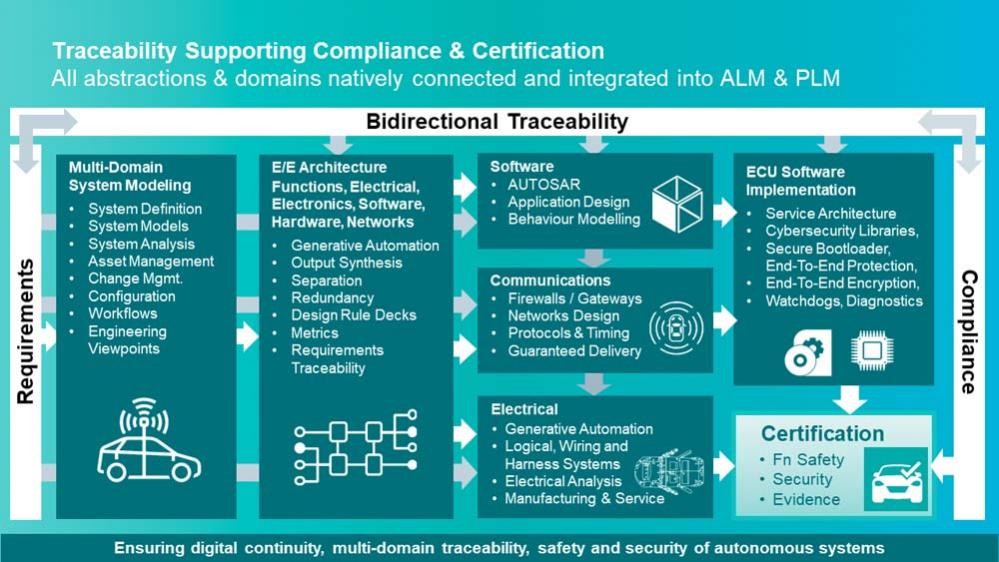
Design rules will check for flaws like unterminated wire ends, differences between graphical and physical bundle length, maximum wire currents, generated heat and other best practices that you have developed over the years. Impacts of design changes can be quickly understood, like changing an ECU to a different location, or changing a network, the performance in another location may change.
Using a unified data source ensures that engineers on the team know when a change happens and how it affects their domain. If you move an ECU then the impact on timing, signal integrity, physical clearance and collision can be determined. You know the impact of each change to your system.
Summary
Generative design is quickly moving into the automotive design realm because it helps design teams model, analyze and optimize across multiple domains to meet stringent safety requirements of ADAS and the goal of level five autonomous vehicles. Software tools like Capital are available from vendors like Mentor. Read the six page White Paper for more details.
Related Blogs
- Fuzzing on Automotive Security
- Automotive Driving and Functional Safety
- Mentor’s Approach to Automotive Electrical Design






Comments
2 Replies to “Applying Generative Design to Automotive Electrical Systems”
You must register or log in to view/post comments.